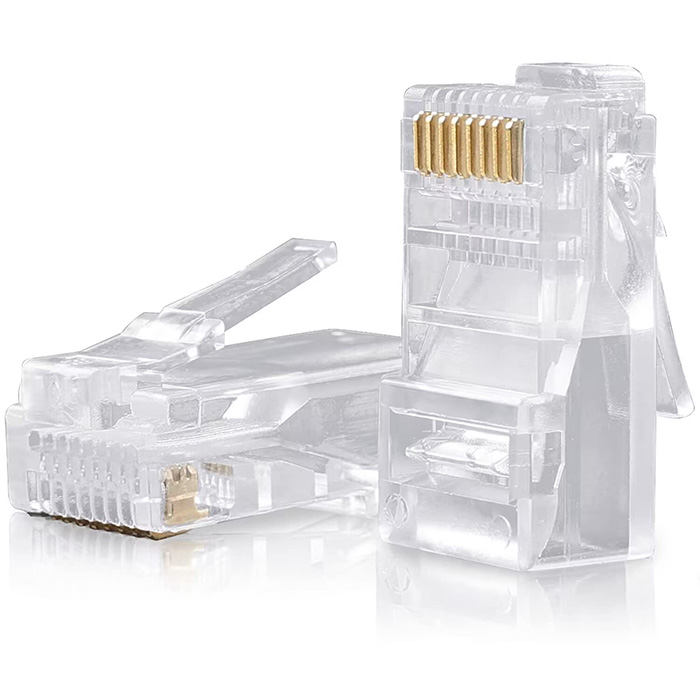RJ45 Connector: The Backbone of Networking
Introduction:
In today's interconnected world, reliable and efficient data transmission is essential for seamless communication and networking. At the heart of this connectivity lies the RJ45 connector, a fundamental component used for Ethernet connections. In this blog post, we will delve into the description, specifications, features, and applications of the RJ45 connector.
Description:
The Registered Jack 45 (RJ45) connector is a standardized eight-pin connector primarily used for connecting computers, routers, switches, and other networking devices. It follows the TIA/EIA-568-B wiring standard, which specifies the pinout assignments and color codes for different networking configurations.

Specifications:
The following table presents the specifications of the RJ45 connector:
| Specification | Description |
|---|---|
| Connector Type | RJ45 |
| Pin Configuration | 8P8C (8 positions, 8 contacts) |
| Wiring Standard | TIA/EIA-568-B |
| Cable Compatibility | Cat5e, Cat6, Cat6a, Cat7, and more |
| Maximum Data Rate | Up to 10 Gbps |
| Termination | Punch-down or Crimping |
| Shielding | Shielded or Unshielded |
| Operating Temperature | -40°C to +85°C |
Features:
Versatility: The RJ45 connector is widely used due to its compatibility with various categories of Ethernet cables, including Cat5e, Cat6, Cat6a, Cat7, and more. This versatility allows for flexible deployment across different networking environments.
Reliable Connection: With its eight-pin design, the RJ45 connector provides a secure and reliable connection, minimizing the risk of data loss or interference. It ensures stable and consistent data transmission, even in high-speed networking applications.
Easy Installation: The RJ45 connector is user-friendly and can be easily installed by utilizing either a punch-down or crimping tool, depending on the termination method. This simplicity facilitates quick and hassle-free network installations.
Scalability: The RJ45 connector is designed to support backward compatibility, enabling seamless integration with older Ethernet standards. It offers a future-proof solution that can adapt to evolving networking requirements.
Applications:
The RJ45 connector finds widespread usage in various applications, including:
Local Area Networks (LANs): It is the primary connector used to establish connections between computers, routers, switches, and other devices within a local network.
Data Centers: RJ45 connectors are utilized extensively in data centers to connect servers, storage devices, and networking equipment. Their reliable performance and high data rates ensure efficient data transfer.
Telecommunications: RJ45 connectors are commonly employed in telecommunications systems, including telephone networks and VoIP installations. They enable the transmission of voice and data signals over Ethernet connections.
Home Networking: With the increasing demand for smart homes and connected devices, RJ45 connectors are vital for establishing reliable connections between routers, modems, smart TVs, gaming consoles, and other devices.
Industrial Environments: The robustness and versatility of the RJ45 connector make it suitable for industrial applications, such as factory automation, process control systems, and surveillance networks.
Conclusion:
The RJ45 connector serves as the backbone of modern networking, enabling seamless data transmission in various applications. Its reliability, compatibility, and ease of installation make it an essential component in establishing secure and efficient network connections. Whether you're setting up a home network or deploying large-scale enterprise solutions, the RJ45 connector ensures reliable and high-speed connectivity, facilitating the smooth flow of information in today's digital landscape.




 Need Help?
Need Help?







